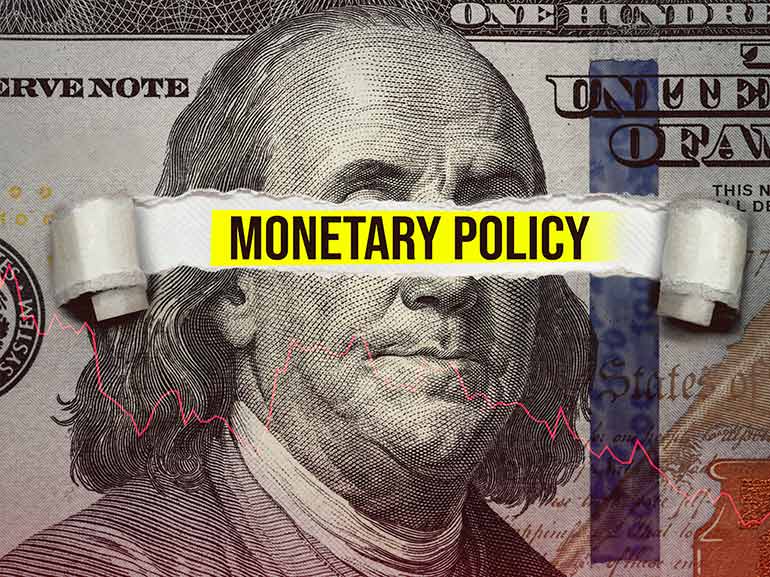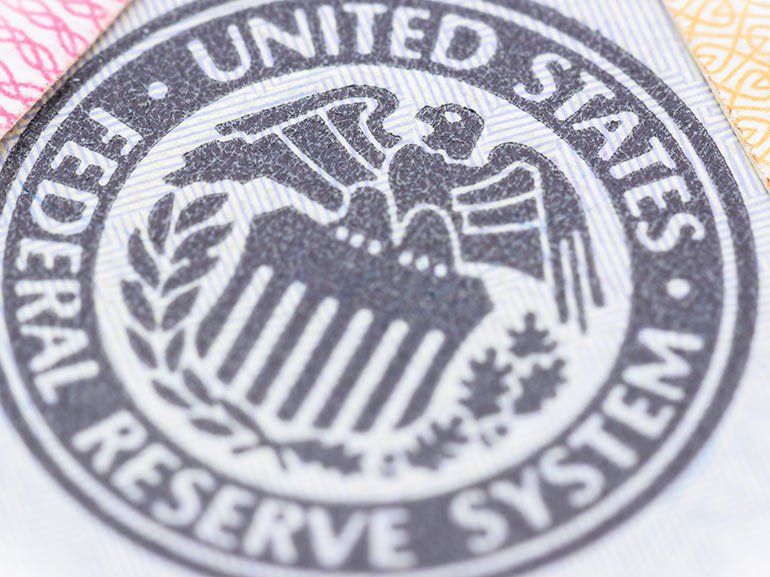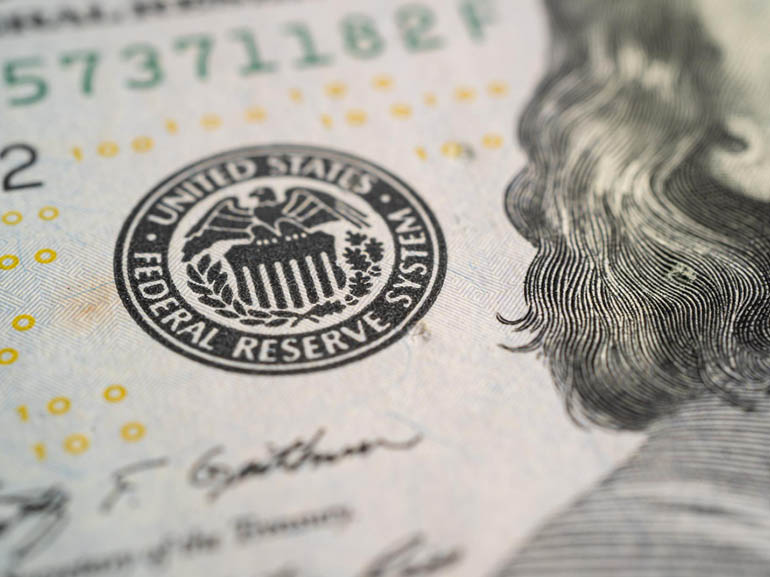Monetary Policy vs. Fiscal Policy: Explaining the Difference
Monetary and fiscal policies may often come to mind when discussing what shapes a nation’s economic growth and stability. These two types of policies wield significant influence over a nation's economic landscape, and despite their differences, both play a substantial role in economic growth.
So what is the difference between monetary and fiscal policy and how do these two function? Here’s what might help you to understand monetary and fiscal policy:

TL;DR
Monetary Policy: Controlled by central banks (e.g., the Federal Reserve), aims to regulate money supply and interest rates and maintain financial stability. It influences inflation and economic growth through tools like open market operations, discount rates, and reserve requirements.
Fiscal Policy: Managed by governments, focuses on taxation and government spending to influence the economy. It impacts aggregate demand, inflation, and resource allocation. It includes tools like taxes and spending decisions.
Key Differences: Monetary policy is executed by central banks, while fiscal policy is set by governments. The tools and approaches of the two differ—monetary uses financial instruments like interest rates, while fiscal involves tax and spending decisions.
Interaction: The combination of both policies can stimulate economic growth and stabilize the economy, although coordination between central banks and governments is necessary.
Definition of Monetary Policy
In short, monetary policy encompasses the strategies and steps implemented by a central bank like the Federal Reserve or another monetary authority with the aim of regulating and influencing the money supply, interest rates, and the general financial landscape within a nation’s economy. In other words, its fundamental goals include ensuring price stability, fostering economic growth, and safeguarding financial stability.
Definition of Fiscal Policy
While monetary policy usually hails back to central banks, fiscal policy relates to governments. Accordingly, a fiscal policy refers to the strategic approaches and the use of government spending and taxation with the goal of shaping, enhancing, and stabilising the economy. To do so, a fiscal policy targets an economy's overall spending level, overall spending composition, or both.
Key Differences Between Monetary Policy and Fiscal Policy
Both monetary and fiscal policy aim to influence the economy’s trajectory, however, there are key differences that should be kept in mind in order to get a better grasp of how the economy works. Here is a brief comparison between monetary and fiscal policies:
The responsible entities: One of the main differences between the types of policies is the parties involved in their making. Whereas monetary policy is executed by a central bank, fiscal policy is executed through a nation’s government.
Tools and methodology: Each policy uses different tools and approaches. Monetary policy uses open market operations, adjustments, discount rates, and reserve requirements, while fiscal policy uses government spending and changes in taxation. (Source: Investopedia)
An Overview of Monetary Policy
Since central banks are responsible for monetary policy, understanding monetary and fiscal policies and what they are may be a good idea to get a basic understanding of monetary policy.
Central banks are financial institutions that are responsible for the regulation and distribution of a nation's or a group of nations’ money and credit. These bodies can range from the US Federal Reserve to the European Central Bank (ECB). Central banks also set interest rates among other things. To gain a more exhaustive understanding of central banks, read our “Central Banks of the World Explained” article.
How Does Monetary Policy Impact the Economy?
Since monetary policy directly shifts interest rates, this means that it can eventually influence inflation and economic growth. As a result, it can have direct impacts on the markets. This is because, usually, when interest rates are higher, tech-heavy stocks, for example, tend to suffer as investors aim for safe-haven assets instead.
In addition, when interest rates increase, financial institutions face the need to secure funds at higher borrowing costs, and they become more compelled to raise the interest rates they charge when offering loans to businesses and individuals. As a result, it can lead to higher borrowing expenses for firms and households.
On the flip side, lower interest rates, for example, allow financial institutions to gain access to funds at more affordable borrowing costs. Consequently, they can pass on this advantage by lowering the interest rates they charge when providing loans to businesses and individuals. This results in reduced borrowing costs for firms and households.
What Are the Tools Used in Monetary Policy in the US?
In the world’s biggest economy, the Federal Reserve uses open market operations, discount rates, and reserve requirements to set monetary policy.
Open market operations: Open market operations refer to the daily transactions the Fed engages in. These include the purchase and sale of U.S. government bonds and aim to either inject money into the economy or withdraw money from circulation.
Discount rate: The discount rate refers to the interest rates the Fed charges commercial banks for short-term loans. Accordingly, the Fed can focus on adjustments to the discount rate to influence short-term interest rates throughout the economy.
Reserve requirements: The Fed can directly change the quantity of money generated through bank lending by establishing the reserve ratio (the percentage of deposits that banks must hold in reserve).
An Overview of Fiscal Policy
Just as monetary policy plays an integral role in the economy, fiscal policy can also be extremely substantial. It can affect economic growth and inflation rates.
How Does Fiscal Policy Influence Economic Growth and Inflation?
The government's fiscal policies can shift the trajectory of the economy through adjustments to tax levels, changes in the types of taxes imposed, modifications in the extent and nature of spending, and decisions regarding borrowing.
The effects of these policy measures can be significant on various aspects of the economy, including aggregate demand, resource allocation, income distribution, and economic activity levels.
Moreover, fiscal policy can directly impact inflation rates. While higher inflation rates can initially benefit public finances by boosting government revenues, the implications of inflationary shocks depend on many factors. These factors can range from the magnitude and type of shock to fiscal policy response, institutional budgetary factors, and monetary policy reaction. That is to say that the fiscal policy response, in particular, can influence the inflation outlook based on the scale and composition of the stimulus.
What Are the Tools Used in Fiscal Policy?
The government employs several tools to set fiscal policy, two of the main ones being taxes and spending.
Taxes: Taxes play a detrimental role in the economy due to the fact that they can affect how much money the government and individuals spend. As such, to stimulate consumer spending, the government can reduce taxes, providing families with extra cash to spend on goods and services, thereby boosting the overall economy.
Spending: Spending serves as a fiscal policy instrument aimed at channeling government funds into particular sectors that require an economic stimulus. Those receiving these funds usually have additional resources to allocate. In addition, similar to taxes, the government anticipates that this money will be spent on various goods and services.
Interaction and Coordination Between Monetary and Fiscal Policy
It is believed that fiscal and monetary policies are most effective when combined. Monetary policy can ensure liquidity and favorable financial conditions for investment and spending, while fiscal policy uses taxation and spending policies to stimulate the economy directly.
As such, implementing fiscal and monetary policies together can help heal the economy from its downturns and promote growth through the coordination between central banks and governments.
Criticisms and Challenges of Monetary and Fiscal Policies
While fiscal and monetary policies can be great tools to promote economic health, they can have some setbacks of their own. Those who critique these policies focus on the following limitations of monetary and fiscal policies:
Central banks like the Federal Reserve have limited leverage on how far they can influence the economy through monetary policy.
Economists can be torn between which monetary or fiscal policy works best for the benefit of the economy.
Fiscal policy can be delayed due to the fact that it can take the government some time to approve and implement it.
Adjusting tax rates through fiscal policy is not a task that can be carried out arbitrarily or frequently due to practical limitations.
Sometimes, fiscal and monetary policies can clash as one party's interests may stunt the growth of the others. (Source :CME)
Conclusion
Monetary and fiscal policies are both fundamental to shaping a nation's economic health. While they serve different functions—central banks manage monetary policy through financial instruments like interest rates, and governments control fiscal policy via taxes and spending—they are most effective when coordinated. Both policies aim to regulate inflation, encourage economic growth, and ensure financial stability. However, they also have their limitations and criticisms, such as delayed implementation and potential conflict between the two. Understanding their roles and differences helps grasp the dynamics of a nation's economy.
FAQs:
What is the main difference between monetary and fiscal policy?
Monetary policy is managed by central banks and focuses on controlling money supply and interest rates. Fiscal policy is determined by the government, using taxation and spending to influence the economy.
How does monetary policy impact the economy?
By adjusting interest rates, monetary policy affects borrowing costs, investment, inflation, and economic growth. Lower interest rates make borrowing cheaper, stimulating spending, while higher rates can reduce inflation by curbing spending.
What tools are used in fiscal policy?
Fiscal policy tools include government spending on public projects and adjusting tax rates to influence the economy's overall demand.
Can fiscal and monetary policies work together?
Yes, when coordinated, they can stimulate economic recovery, create growth, and stabilize financial conditions.
What are some criticisms of these policies?
Limitations include slow implementation of fiscal policies and potential conflicts between monetary and fiscal goals. Additionally, central banks have limited control over long-term economic trends.




